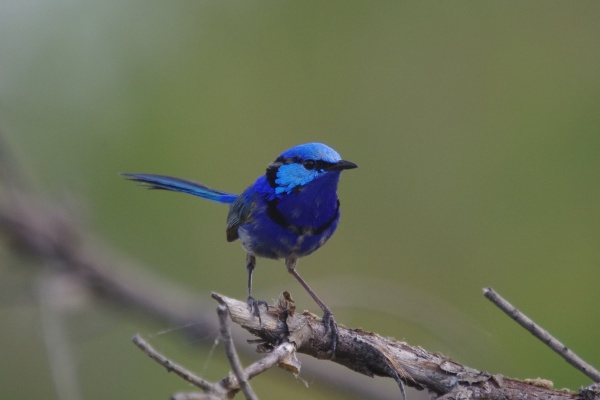Facts About Splendid fairywren
The splendid fairywren, also known as the splendid wren or blue wren, is a captivating small bird found throughout the Australian continent, particularly in the drier regions. These birds are intriguing due to the males transforming into a vivid blue and black plumage during the breeding season, while females retain a more muted coloration. Despite being socially monogamous, splendid fairywrens are known for their promiscuity, frequently mating with other wrens and even assisting in raising chicks that are not their own.
You can observe the splendid fairywren in a wide range of habitats, from forests to arid scrublands, provided there is abundant vegetation for cover. They belong to the genus *Malurus*, which encompasses eleven species of fairywrens, closely related to the superb fairywren and the purple-crowned fairywren. Initially classified as *Saxicola splendens*, they were later reclassified as *Malurus splendens*. There are several subspecies, such as the banded, turquoise, black-backed, and emmottorum fairywrens.
These birds are small but striking, especially the males with their brilliant blue and violet feathers during the breeding season. Both sexes undergo multiple molts throughout the year, changing their plumage. Their diet primarily consists of insects, but they also consume seeds and occasionally flowers and fruit. Adapted to arid and semi-arid environments, they prefer dry, shrubby areas.
Splendid fairywrens are very active, often seen hopping and bouncing around as they forage for food. They live in groups that defend their territories year-round, typically comprising a monogamous pair and several helper birds. The males engage in unique courtship behaviors, including the 'sea horse flight' and presenting flower petals to females. The breeding season extends from late August to January, during which females construct dome-shaped nests and lay eggs. Unfortunately, their nests are frequently targeted by brood parasites such as the Horsfield's bronze cuckoo.
Their diet predominantly features insects, but they also consume seeds, flowers, and fruit. They forage mainly on the ground or in shrubs and must remain vigilant against predators. Despite their significance to the ecosystem, there was a mix-up when they appeared on an Australia Post stamp—they were mistakenly depicted as superb fairywrens instead!
